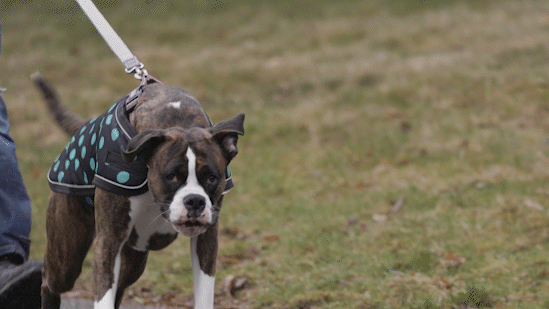Dog owners, proceed with caution. A new study reports a surprisingly high risk of traumatic brain injury among those taking a stroll with their pup on a leash.
Johns Hopkins University researchers found that traumatic brain injuries, or TBIs, were the second most common injury among adults treated in U.S. emergency rooms for accidents related to walking a leashed dog. The most common injury was a fractured finger and third was a sprain or strained shoulder. The information comes from a U.S. Consumer Product Safety Commission’s National Electronic Injury Surveillance System database. The study was published in the journal, Medicine & Science in Sports & Exercise.
Traumatic Brain Injury Responding to Clozapine
Firearm Storage Among Military Service Members With Suspected TBI
Chronic Traumatic Encephalopathy: Football vs Soccer
Pup Walking Perils
From 2001 to 2020, 422,659 adults sought emergency medical treatment for an injury that occurred while walking a leashed dog. Of these, 5.6 percent (more than 23,000) were TBIs. TBIs identified in this study consisted of both concussions and non-concussive internal head injuries. The later category encompassed brain contusions, epidural hematoma, and subdural hematoma.
Over the 20-year study period, the estimated annual incidence of injuries due to leash-dependent dog walking more than quadrupled, the researchers found. Notably, women were 50 percent more likely than men to sustain a fracture. Older dog walkers were more than three times as likely to experience a fall. Seniors were also more than twice as likely to fracture a hip and 60 percent more likely to sustain a TBI compared to more youthful dog walkers.
Tangled Leash Trouble
Why the increased risk for this seemingly innocuous pastime?
A combination of increased dog ownership and more people making an effort to stay in shape, the authors speculated.
“According to a 2021–2022 national pet ownership survey, nearly 53 percent of U.S. households own at least one dog,” said Ridge Maxson, the study’s first author and a third-year medical student at the Johns Hopkins School of Medicine. “Dog ownership also increased significantly in recent years during the COVID-19 pandemic.”
Ridge added that few studies have looked into possible downsides to dog walking. Most of the injuries (55 percent) happened because Fido made a sudden, unexpected move or the owner tripped over the leash and took a tumble.
“Clinicians should be aware of these risks and convey them to patients, especially women and older adults,” says Edward McFarland, the study’s senior author and director of the Division of Shoulder and Elbow Surgery at Johns Hopkins Medicine. “We encourage clinicians to screen for pet ownership, assess fracture and fall risk, and discuss safe dog walking practices at regular health maintenance visits for these vulnerable groups. Despite our findings, we also strongly encourage people to leash their dogs wherever it is legally required.”
The authors said that they will release an analysis of leash-dependent dog walking injuries among children under age 18 in the near future.




